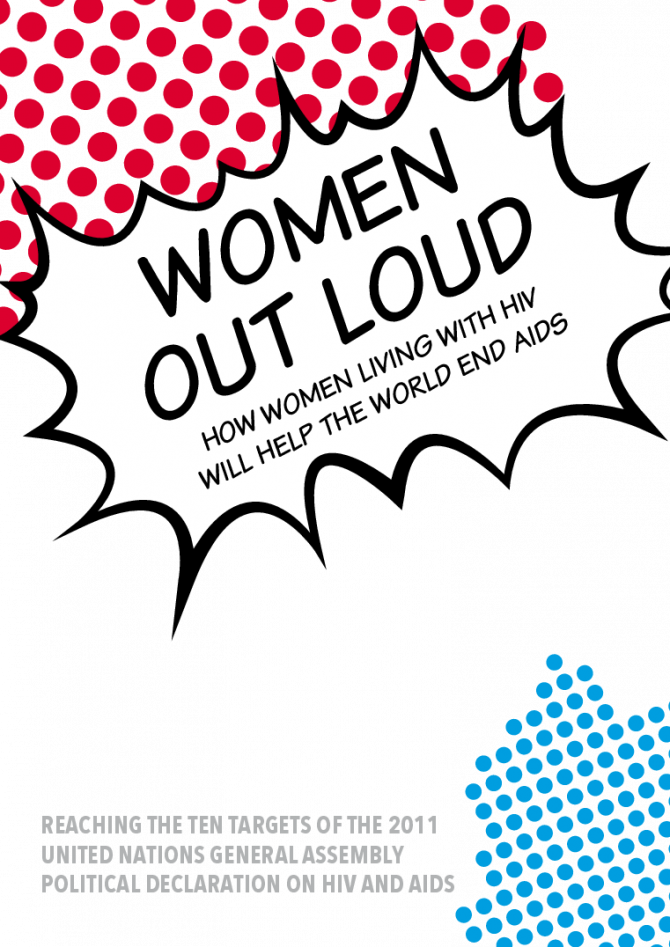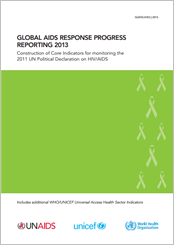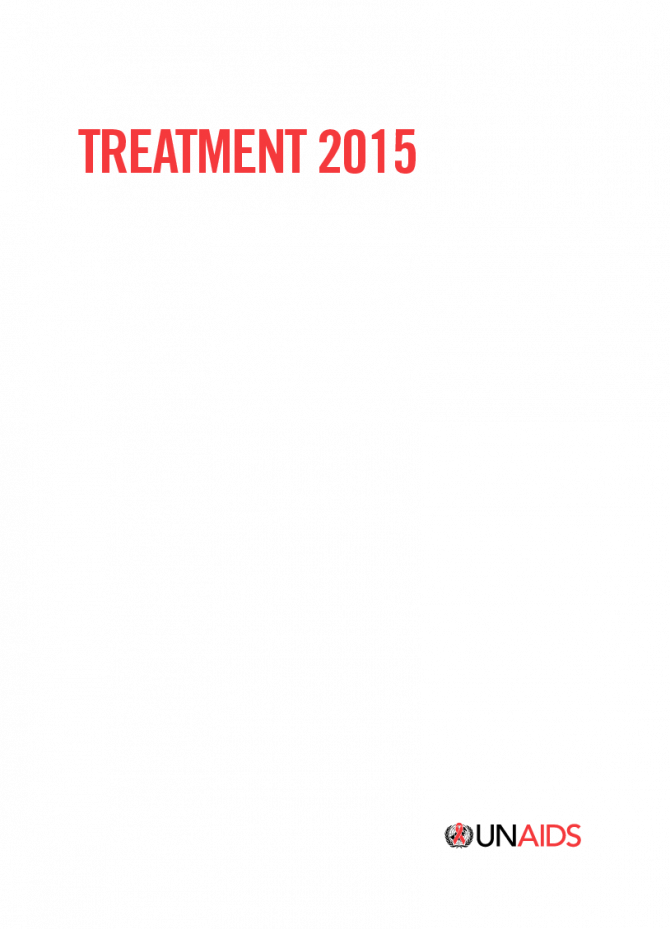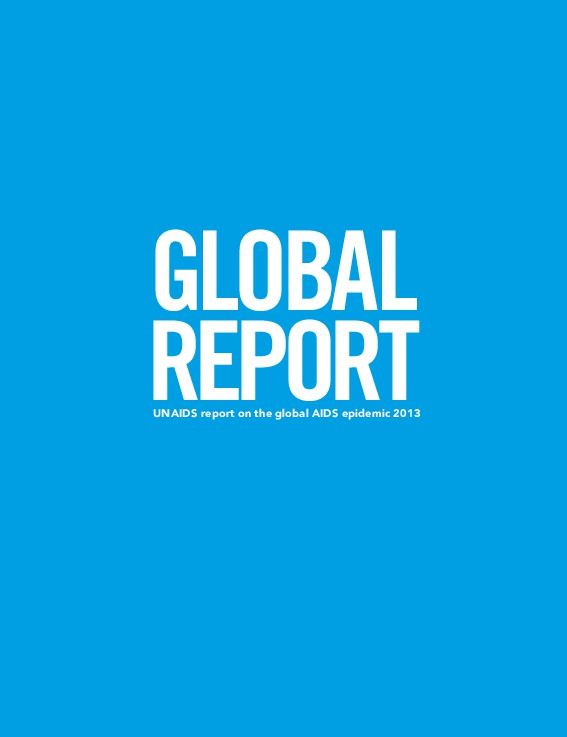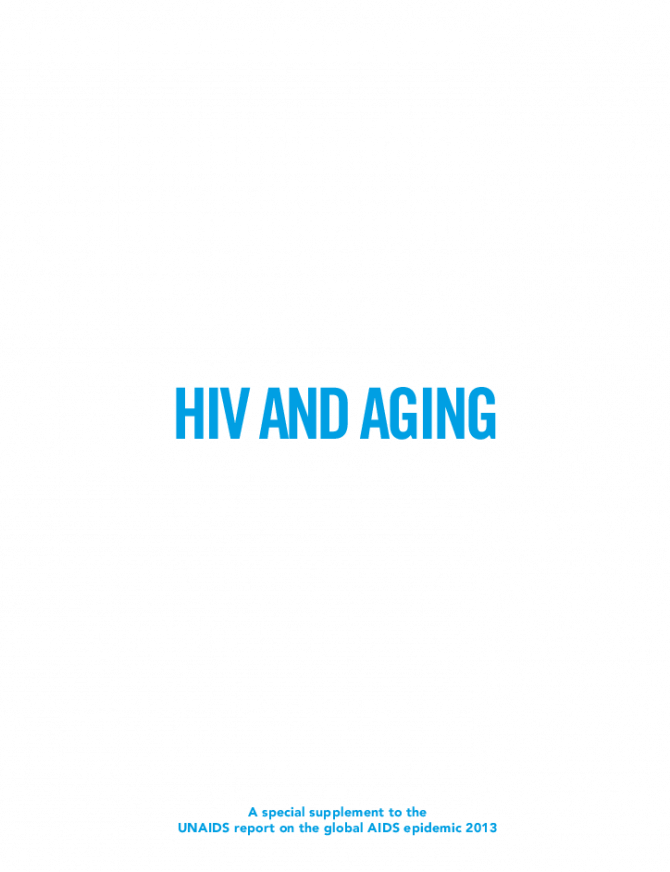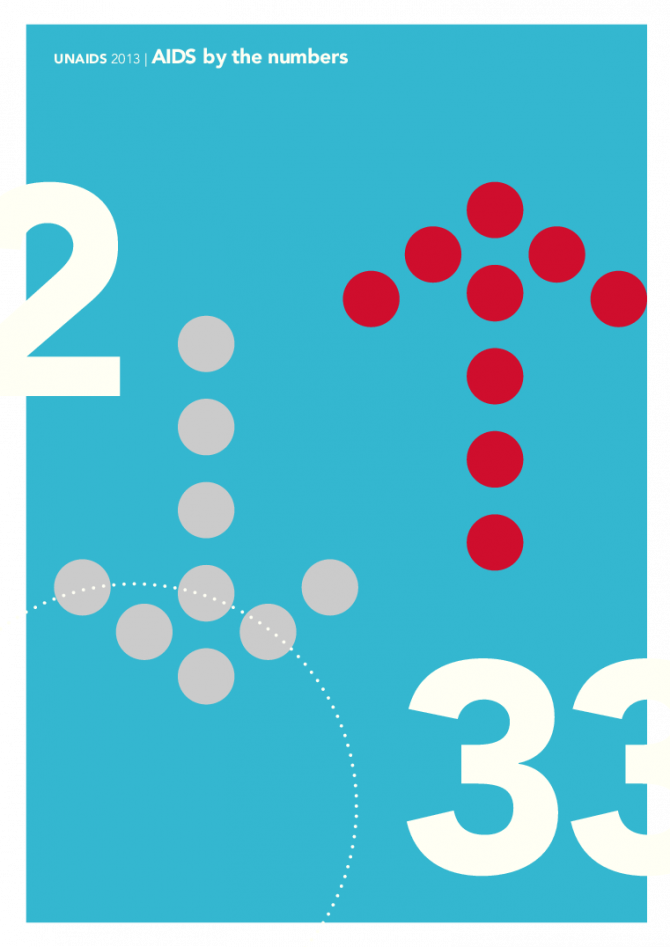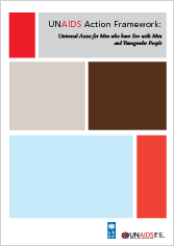Documents
Women out loud: How women living with HIV will help the world end AIDS
11 December 2012
Women may make up half the world’s population, but they do not share it equally. This is especially evident when it comes to HIV. Half of all people living with HIV are women, yet many are underserved or do not know their status. Despite the many successes we have seen, women still face inequalities that will keep the AIDS response from reaching its full potential.
Documents
Global AIDS response progress reporting 2013: Construction of core indicators for monitoring the 2011 UN political declaration on HIV/AIDS
31 January 2013
To inform the midterm review, UNAIDS is requesting countries to provide their most recent data for 2012, using the indicators in this document. This data will serve countries in conducting their own midterm reviews, helping countries to focus on the areas where action is most needed to reach countries' priority targets and elimination commitments by 2015.
Documents
Treatment 2015
13 July 2013
Treatment 2015 provides a results-driven framework to expedite and greatly expand coverage. With less than 1000 days before the end of 2015, much work remains to be done. The WHO’s new 2013 guidelines on The Use of Antiretroviral Drugs for Treating and Preventing HIV Infection recommend a CD4 threshold of 500 for initiation of HIV treatment. As an important step towards getting to zero AIDS-related deaths, countries should be encouraged to prioritize immediate efforts to ensure that all people eligible for HIV treatment have access to it.
Documents
HIV and Aging
01 November 2013
The supplement reveals that out of the global total of 35.3 million [32.2 million – 38.8 million] people living with HIV, an estimated 3.6 million [3.2 million–3.9 million] are people aged 50 years or older. The majority––2.9 million [2.6 million–3.1 million]—are in low-and middle-income countries where the percentage of adults living with HIV who are 50 years or older is now above 10%. The supplement also reveals that in high-income countries almost one-third of adults living with HIV are 50 years or older.
Documents
AIDS by the numbers
20 November 2013
Latest estimates from the Joint United Nations Programme on HIV/AIDS (UNAIDS) show that the world continues to close in on the goal of ending the AIDS epidemic by stopping HIV transmission and halting AIDS-related deaths. Remarkable progress has been made over the last decade—yet significant challenges remain.
Documents
Access to Antiretroviral Therapy in Africa: Status Report on Progress towards the 2015 Targets
19 December 2013
Achieving the vision of zero new HIV infections, zero discrimination and zero AIDS-related deaths requires that everyone needing HIV treatment has access to life-saving medication and access to HIV prevention services. Antiretroviral therapy is one of the most effective tools available and it is an essential part of an efficient, sustainable AIDS response.
Documents
UNAIDS 2011 World AIDS Day report
21 November 2011
A new report by the Joint United Nations Programme on HIV/AIDS (UNAIDS), released on 21 November, shows that 2011 was a game changing year for the AIDS response with unprecedented progress in science, political leadership and results. The report also shows that new HIV infections and AIDS-related deaths have fallen to the lowest levels since the peak of the epidemic.
Documents
UNAIDS Action Framework: Universal Access for Men who have Sex with Men and Transgender People
21 July 2009
’Business as usual’ is no longer a viable response to the HIV-related risks of men who have sex with men and transgender people1. Where data exist on HIV in these populations, they show that our collective responses are failing far more often than they are reaching scale or succeeding. Just as disconcerting, in many parts of the world, is the fact that few reliable data exist at all.

